2017 marks the fifth year that the AIA Japan chapter has sponsored students to travel to Portland for its annual Student Travel Study Tour. One goal of this program is to increase AIA participation in Japan to contribute to the global AIA network. The idea is to expose Japanese students to US-style practices and encourage students to cultivate an international perspective when they return to Japan to develop their architecture careers.
The program is open to any students enrolled in an architecture program at a Japanese University. Out of thirty-six entries this year, six students were selected from five universities: Meiji, Waseda, Rikka, Hosei and Tokyo University.
For three weeks in September, the students are placed with host firms where they’re given a desk space and treated as colleagues. Although they work on their own mini-studio projects, they can participate in office charrettes and meetings and generally experience environments that they would not easily be able to visit on their own. SRG hosted Minami Tanaka of Hosei University and Ryo Narita of Meiji University. Mahlum Architects and Place Studio also each hosted two students.
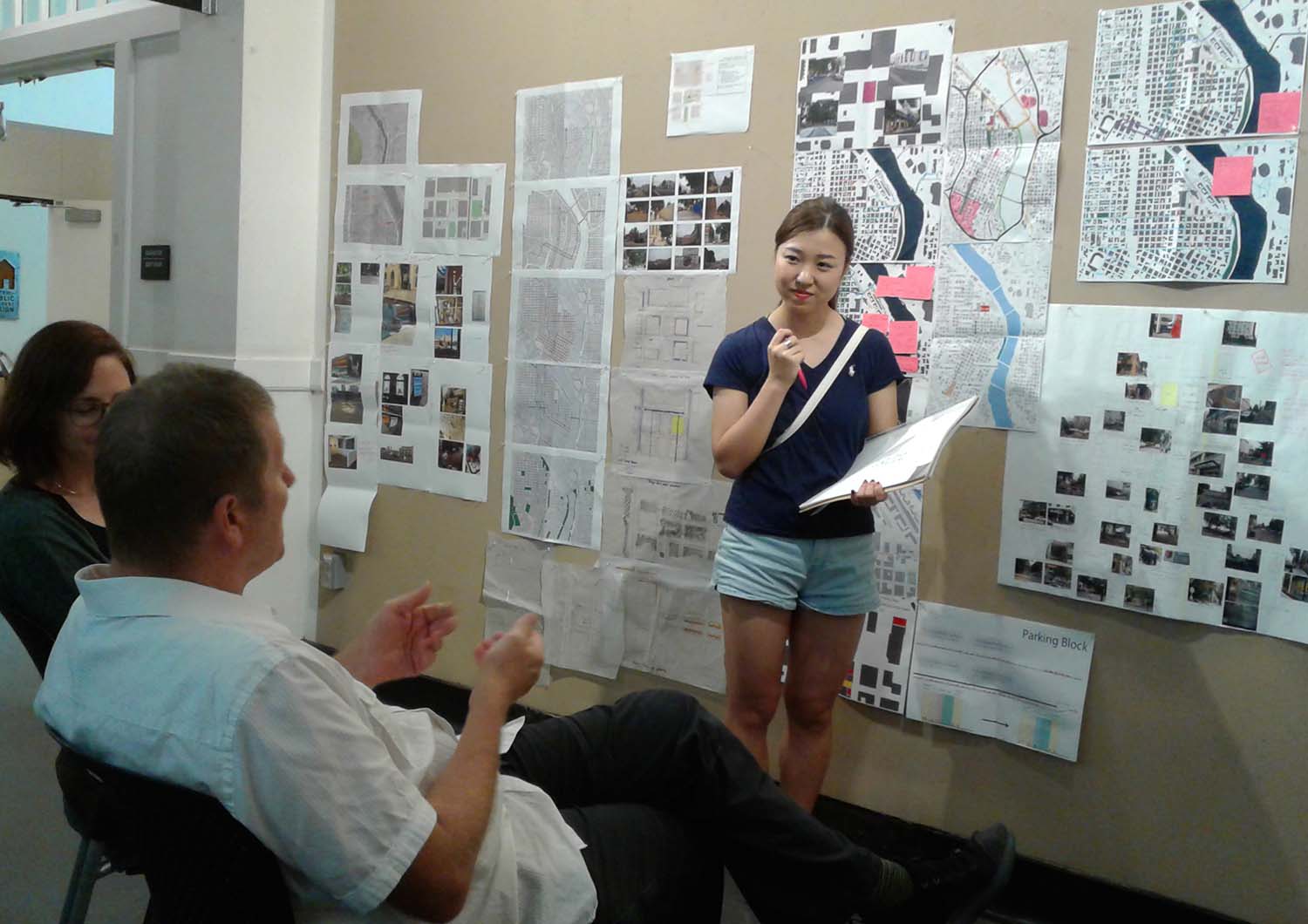
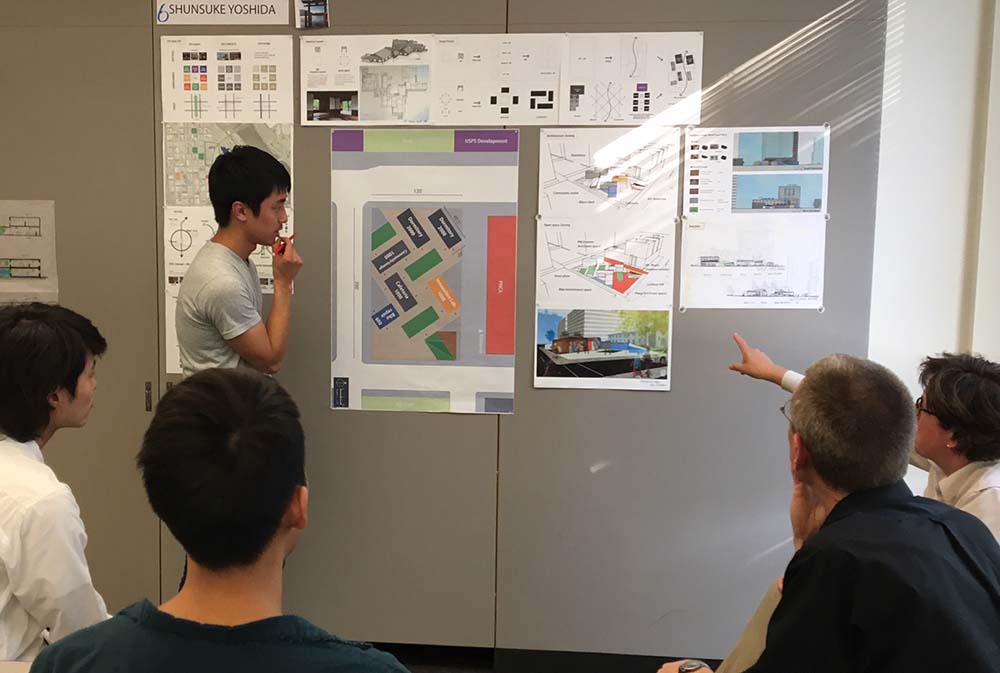
In the first week, the students practiced presenting and making self-introductions in English. During our Design Thursday Charette we learned about wabi sabi, pop-up beach houses and the art of sake making. One of the main objectives of the program is to provide multiple chances for the students to practice speaking and presenting in English. According to program coordinator Yasu Yanagisawa of Mahlum Architects, “Japanese university students don’t have many opportunities to make presentations, even in their native Japanese. In fact, these six students have now presented more times in three weeks than they had in all of their university experience so far.”
I think the main way Japanese architectural programs differ from American programs is in the number of studio hours required per week. Japanese programs generally assign students four studio hours per week as opposed to US programs that assign twelve hours per week. Also, American programs base classes around discussions with a heavy emphasis on making presentations; whereas in Japan, one could feasibly go through the whole program without ever having to present or defend ones design. Another important goal of this scholarship is to give students experience presenting and discussing design ideas.
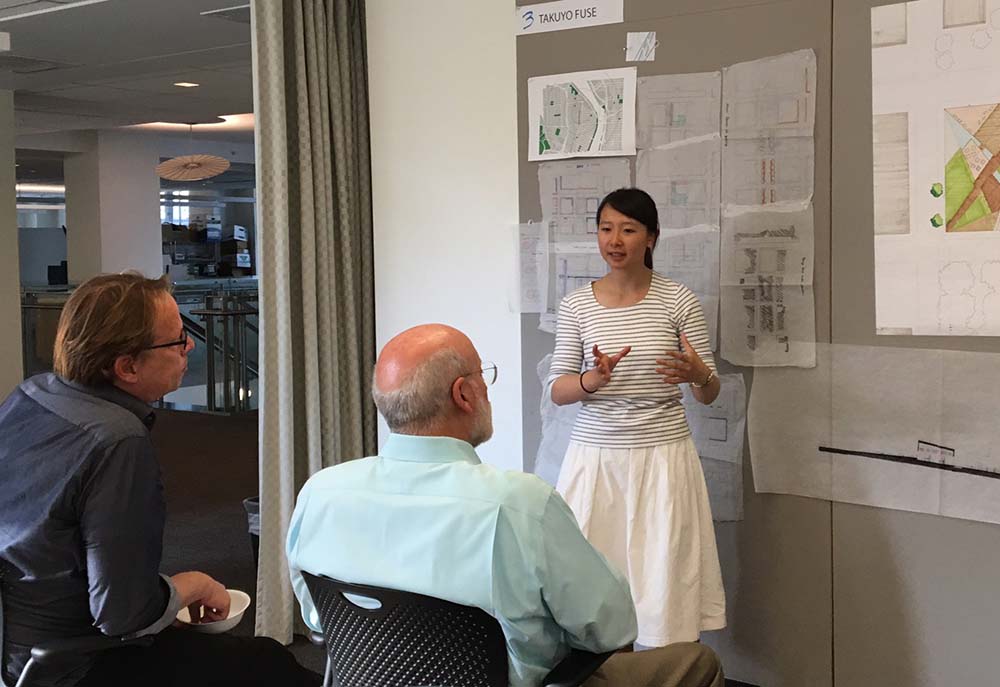
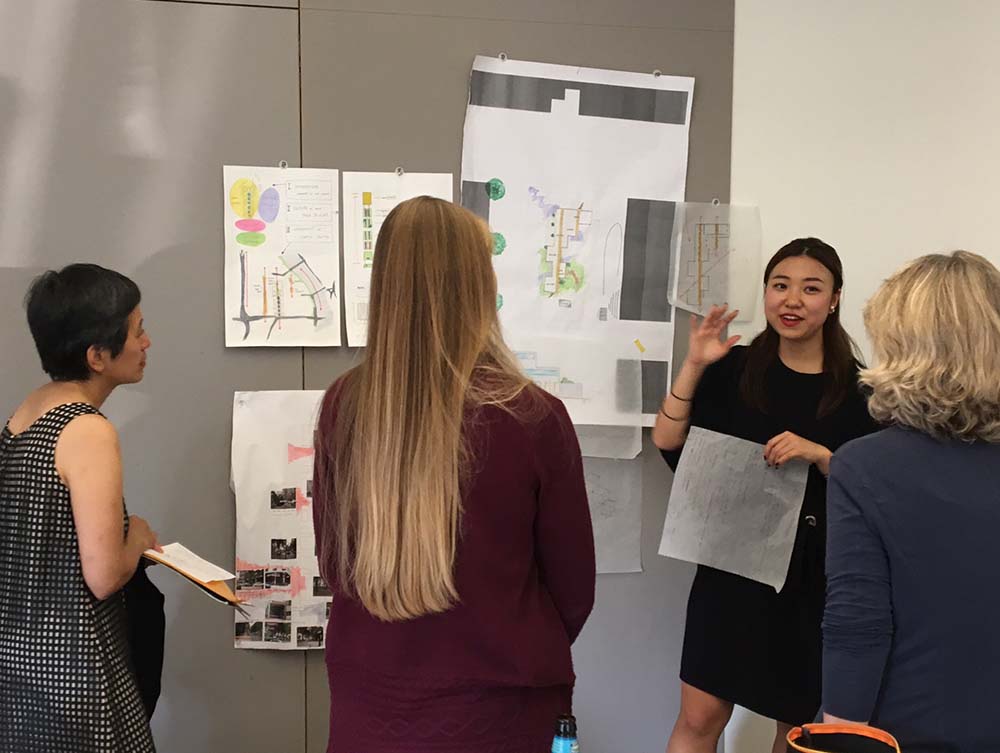
In the second week, students analyzed the site for their mini-studio projects: student housing at Pacific Northwest College of the Arts in downtown Portland. They sketched and studied the context, talked to students and faculty, and treated it like a real project. SRG staff shared their knowledge and experience with the students and gave constructive feedback on their projects. The students took advantage of this opportunity to interact with design professionals and observe how we collaborate and share ideas freely. They attended meetings, visited construction sites, participated in design discussions, and socialized with professionals and peers.
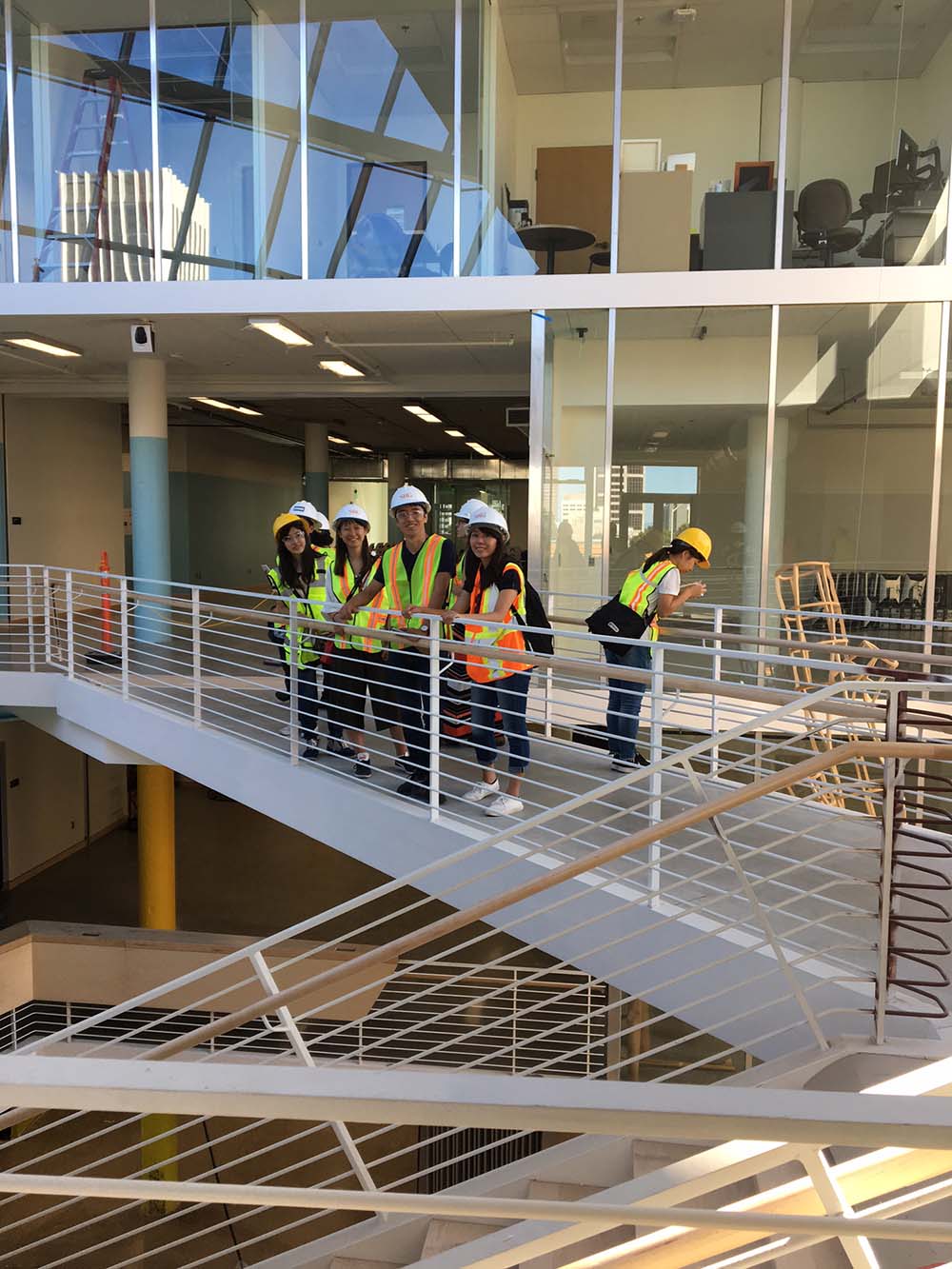
It wasn’t all work however, I also had the chance to take them on a three-day whirlwind trip to Seattle. We went via Amtrak, which unfortunately, proved to be nothing like the Shinkansen in Japan. The tour in Seattle included a range of must-see buildings including the Seattle Public Library, Seattle Center, St. Ignatius Chapel at Seattle University, Pike Place Market, the Olympic Sculpture Park, the Frye Museum and more. Tom Kundig, design principal at Olson Kundig, did a nice tour with CNN, and he hit on several of the same sites we did. “We paid close attention to how buildings are sited within their landscape and filled up our sketch books,” said Ryo Narita. The students also got a chance to see the Seattle offices for SRG, Mahlum, and Miller Hull. They were very impressed by how collegial the offices were towards each other.
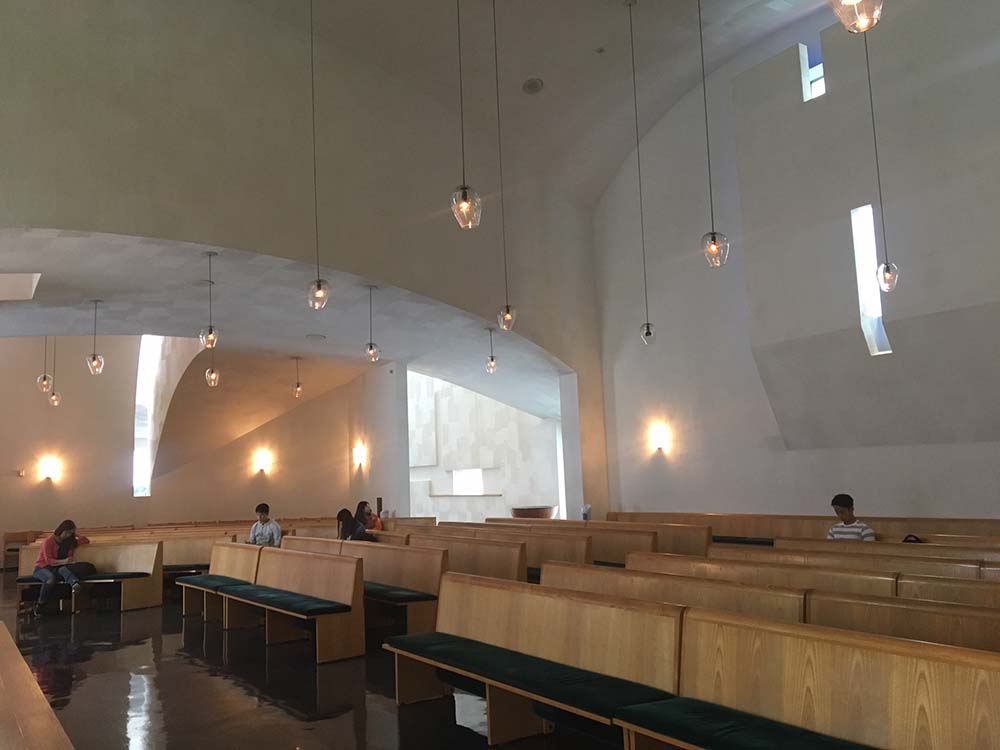
For the first couple of days, most of the students faced some difficulties with communicating. It was not a problem of proficiency or design skill but simply a new way of interaction and self-expression. Aside from the challenge of sudden foreign language immersion, students also may not be familiar with the casual American social dynamic; for example, in an American office environment, people tend to speak up frequently, asking questions and seeking clarification; whereas in Japan, especially young people are expected to remain quiet. With a lot of encouragement, about half way through the program, students seemed to get accustomed to this new atmosphere and come out of their shells. They started enthusiastically sharing their ideas not only with each other but also with their host firm colleagues.
Their final presentations were held at SRG’s Portland office on September 14th. The students presented their proposals for the site adjacent to PNCA which consisted of open space, campus housing, and ground floor retail space. It was the culmination of their three-week study tour and immersion in northwest architecture firm culture. Thanks to our colleagues in both cities, these students enjoyed truly unique experiences.
A special thanks to SRG, Mahlum and Place Studio; PNCA and PSU School of Architecture; a special thanks to Clive Knights, Nancy Cheng, Jim Suehiro, Anne Schopf and Jonah Jumala; AIA Portland and AIA Japan members and finally, Autodesk, a special program sponsor.
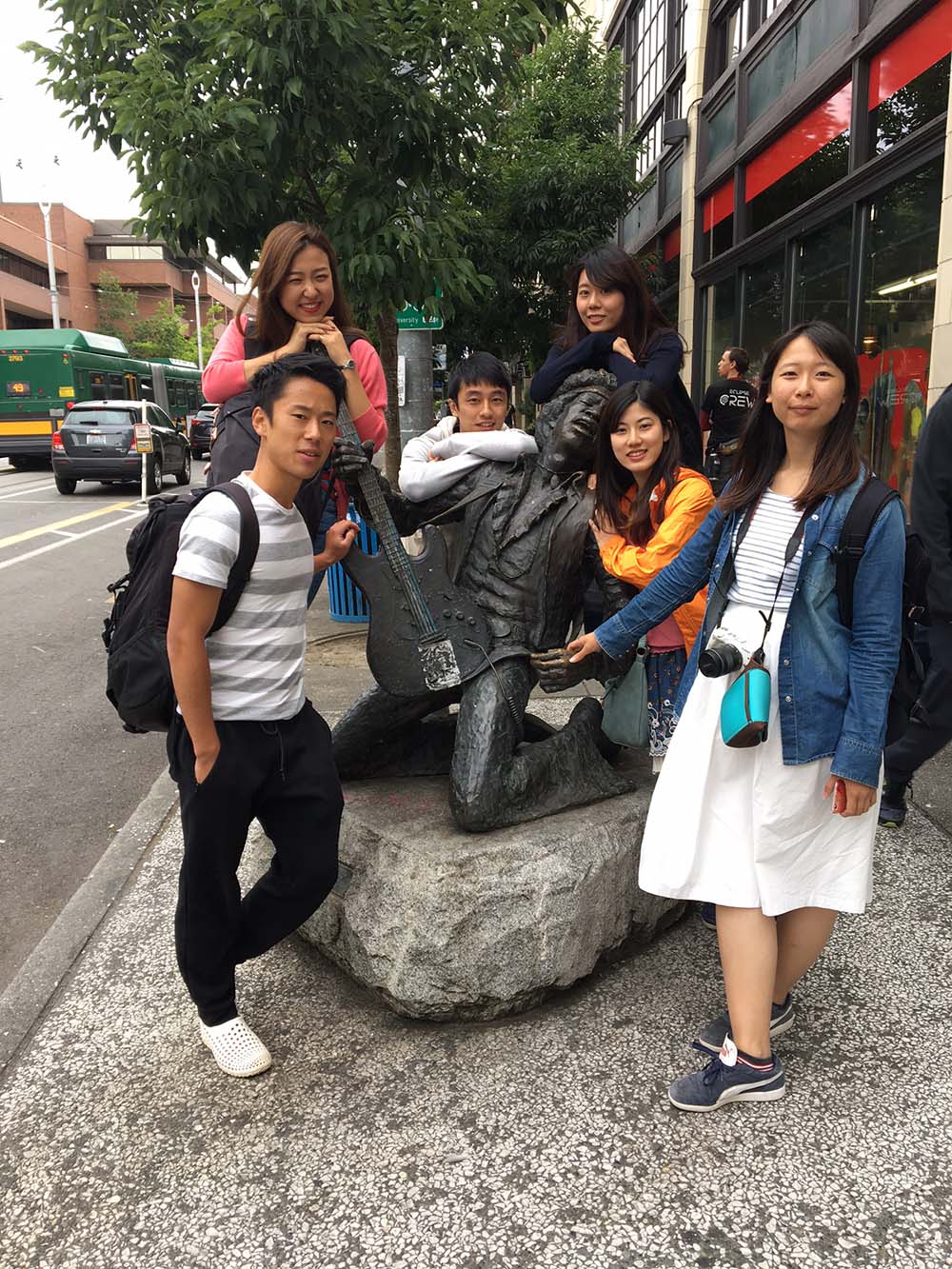
Nicolai Kruger

